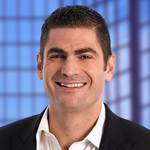
Since 2011, HealthPlan Holdings has doubled the size of its business with a compounded annual growth rate of 35 percent a year. That growth, says president and CEO Jeff Bak, is the result of many things, from changes in legislation to good management with the right associates, but it ultimately comes down to being better, faster, and cheaper.
“Our key differentiator is being more nimble for our customers,” says Bak of the leading provider of end-to-end outsourcing services for health-care insurers. “We anticipate emerging problems, resolve them, and package them as a solution that costs substantially less than what it would if our customers do it themselves. And that’s a theme that has always driven our company. You have to be better, faster and cheaper, and if you’re not, you have to ask, ‘Why should the customer choose us?’”
When founded in 1970, HealthPlan Holdings primarily served the small-business health-care insurance market; over time, it would cycle into the individual market. With the advent of government and private exchanges under the Affordable Care Act (ACA), it has again found new sources of growth. Today, the company supports nearly 3 million individual members and 100,000 small businesses with end-to-end outsourcing services, including software and customer support, for some of the largest US managed-care organizations. Bak expects it to continue to grow at a double-digit rate in 2015 and 2016.
Bak has been with HealthPlan Holdings since 1995; at the time, it was publicly owned. Eventually, he led a management buyout that took the company private in 2001, at which time he became CEO—or, in his words, chief growth officer, chief expense officer, and head cheerleader. “I spend quite a bit of time thinking about ways to keep the customers we have intact and grow the business, and I try to make sure we are mindful of being efficient users of our capital,” he says. “But I also have to be engaged and proactive with my team, encouraging them in the face of setbacks.”
Supporting Bak is an executive team with clearly defined roles: a chief administrative officer who handles financing, accounting, legal, and human resources; a head of technology who oversees infrastructure and software; a head of business development who is always looking for the next big deal; a head of sales who helps customers grow organically via the company’s retention and distribution services; a head of operations who oversees the call center, claims processing, and all things in between; and two general managers who handle key relationships with large accounts. Bak meets with each of them for fifteen minutes each morning to clear any issues that have arisen, then again weekly to ensure the team is on track to meet key goals. More intensive meetings occur monthly, when the entire management team meets for a one-day off-site meeting to review the progress of strategic priorities, and quarterly, when it meets for a two-day session with a facilitator to set strategic priorities.
Those strategic priorities—called “rocks”—are a big part of the company’s core value system. “Rather than get overly concerned about the annual progress, we break our goals into quarterly rocks, which let us narrow down the key things that have to be accomplished, publish and measure progress, and ask key areas of business to create sub-rocks,” says Bak, pointing to the 2014 open-enrollment seasons for the ACA as an example.
The passage of the ACA sent droves of individuals—many of them previously uninsured due to cost or preexisting conditions—to the health-care market. Keeping up—from a technology and support perspective—was a challenge. As a result, in the ACA’s first open-enrollment period in 2013, HealthPlan Holdings had challenges: new enrollee volume was higher than forecasted, and the company’s operational and systemic processes were not fast enough. As a result, one third-quarter 2013 rock was to make the infrastructure investments and software changes necessary to ensure a smooth 2014 open enrollment.
Rocks are always reviewed at the company’s next quarterly meetings, with the expectation that 80–90 percent of the company’s strategic priorities are met. “If they aren’t, we look at root causes, and there’s a lot of accountability,” says Bak. “Was it a timing issue? An execution issue? A people issue?”
Usually, however, goals are met, thanks in part to good hiring and solid communication. Bak looked closely at the company’s core values when filling the positions on his senior leadership team, in part because culture trickles down. “I don’t take myself too seriously, nor does the rest of the executive team, and I think that works its way through the organization,” he says. But communication is also important. “The more you grow, the more things get distorted, so we try very hard to keep up a cadence of communication so people understand the highs and lows of what’s happening within the business,” Bak says, noting that he encourages all employees to be in daily huddles with their managers, and works to ensure there are a number of all-employee meetings each year. As a result, the company has a good employee-retention rate, with turnover in the mid-teens, low for a company that has a high number of processing and customer-service associates.
One thing Bak has learned over the years is that you can’t try to be all things to all people. “We’re really good at a handful of things,” he says. “We’re good at membership engagement. We’re good at cash management around the life cycle of a member. We’re good at the software that supports transactions. We think about those things all day, every day.”

